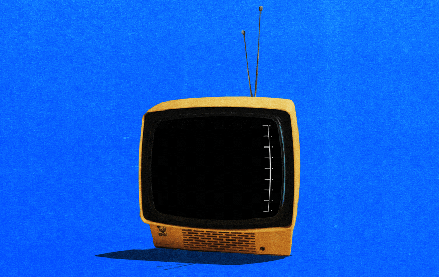Future of TV Briefing: 5 reasons CTV’s ROI comes up short for advertisers

This Future of TV Briefing covers the latest in streaming and TV for Digiday+ members and is distributed over email every Wednesday at 10 a.m. ET. More from the series →
This week’s Future of TV Briefing breaks down the biggest obstacles to advertisers reaping returns from their CTV ad investments.
- RO-yikes
- Disney’s AI dilemma, Netflix’s live sports czar, the Amazon-backed AI streaming service and more
RO-yikes
CTV would seem to be the miracle media channel. It combines the upper-funnel faculties of TV with the performance capabilities of digital. So then why isn’t delivering on advertisers’ ROI expectations?
During Digiday’s CTV Advertising Strategies event in New York City last month, UM Worldwide chief investment officer Marcy Greenberger gave the answer for what’s limiting CTV’s effectiveness and cost-efficiency.
“It’s a shame because on paper everything suggests that CTV should actually perform better. There’s less ad clutter. You can’t skip ads. You can be more targeted. There’s so many positives to it. But I think price is probably one of the biggest barriers,” she said.
But that’s just one of five reasons Greenberger gave for what’s weighing down CTV’s ROI for advertisers. Here they all are.
CTV ads cost more than traditional TV
“Right off the bat, even if you’re targeting people [two years old and older, the broadest and cheapest audience segment], you’re paying more to start with [on a CPM basis]. Then you start to add on a premium for any way that you want to optimize your buy. If you want to apply a restrictive do-not-air list because brand suitability is important to you, there’s a premium for that, which is a premium you wouldn’t necessarily pay in linear. There might be a premium if you want excessive frequency capping, because you notice that the best practice for your business is a certain cap that’s beyond the standard. So you start to layer on all these premiums, and you went from a rate that was already significantly higher to now something that could be 50% or more higher.”
Frequency management. Period.
“There’s still a lot of challenges with managing frequency in the CTV space, especially when you’re buying direct. As viewers, we still tune in and often see the same ad over and over again. So not only is that a bad consumer experience, but that becomes really wasteful in terms of your budget because you’re not reaching incremental households to get new people or more people to buy your product. As programmatic has evolved, and as partners are enabling that more, it’s become something we can control for. That’s one of the ways that we’ve seen an improvement. But that is still a challenge.”
Media mix models are too traditional TV-centric
“The models themselves — and I’m certainly not an analytics or research expert — but it does seem that they tend to favor some of the traditional channels. They’re built oftentimes to measure GRPs. As we start to think about impressions or unique reach as being the thing that you’re targeting, but it tends to favor GRPs. And we have a lot of clients who, at the end of the day, are going to still want to funnel their money into the most efficient platform that gets them to their GRP threshold that their models prove is successful.”
CTV ad sellers aren’t sharing enough content signals
“There’s a lot of positives about being able to target in CTV, whether it’s about an audience or contextually. But without really understanding where you’re running, it’s hard to sometimes diagnose what’s working and what’s not and is it better to target based on an audience or a context, as well as am I actually running in the places that I paid to target? That’s a piece in linear we can see when we can start to see things declining in ROI. It’s a little bit easier to pick apart what is different about my schedule this time. You’re able to diagnose it a little bit better. And in CTV, we just don’t have that level of transparency to do that.”
The overlap with TV sports viewership is eroding CTV’s incremental reach
“Something we’ve just uncovered in, honestly, the last week on one of my brands is that we started to see that our ROI was declining in CTV. And one of the things that we’ve noticed — because we are employing a measurement partner to do cross-screen frequency — is there was a lot more overlap between our linear and CTV buy than there had been in the past. And our hypothesis is it’s because we’ve been leaning so much more into live sports in linear TV, which tends to have a really broad reach. And historically, the overlap was very minimal between linear and CTV. And the more that we’re leaning into this really broad-reaching and premium linear inventory, the more that we’re starting to see less of that incrementality.”
What we’ve heard
“They’re trying to learn from us how to navigate those asks, when someone was asking for $20,000 yesterday, and then, in two months, they want $40,000.”
— Open Influence’s Daniella Corredor on creators’ rising rates for brand deals
Numbers to know
$19.99: Monthly subscription price for Fox’s upcoming standalone streaming service Fox One.
41 million: Number of paid subscribers that NBCUniversal’s Peacock had at the end of the second quarter of 2025, the same count as at the end of Q1 2025.
25 million: Number of paid memberships going to creators through Patreon.
18%: Percentage increase year-over-year in Roku’s platform revenue, which primarily consists of ad revenue, in Q2 2025.
-1.3 million: Number of subscribers that Paramount+ lost in Q2 2025.
$2.99: Monthly subscription service for Roku’s new ad-free streaming service Howdy.
What we’ve covered
Creators are ‘doubling’ their rates as they capitalize on brands’ growing interest:
- Some creators have doubled their fees for brand deals this year amid rising demand and tightening turnaround times from brands.
- Marketers are unsurprisingly not stoked about the price increases.
Read more about creators’ sponsorship prices here.
Inside the creator economy’s M&A boom:
- 52 M&A deals involving creator economy companies were completed in the first half of 2025.
- That’s a 73% increase from the H1 2024 count.
Read more about the creator economy here.
As YouTube Shorts reaches 200 billion views, advertisers increase their investment:
- Tinuiti increased its spending on YouTube Shorts ads by 11% from Q1 2025 to Q2 2025.
- Markacy expects its clients to roughly double their YouTube Shorts ad spending by the end of this year.
Read more about YouTube Shorts here.
Nielsen’s RealEyes partnership offers an outcomes measurement solution:
- Nielsen will add outcome measurements to its Nielsen One platform.
- The announcement comes as Nielsen has come under fire from TV ad buyers and sellers for issues with its big data plus panel measurement system.
Read more about Nielsen here.
Here’s what media buyers say they need to accelerate ad spend on Netflix:
- Netflix has firmed up its position in advertisers’ streaming ad budgets.
- But a lack of measurement options and content signals is compromising some spending.
Read more about Netflix here.
What we’re reading
The House of Mouse is dabbling with incorporating generative AI into its productions but remains wary of negative public perception as well as legal issues, like if using AI forfeits copyright protections, according to The Wall Street Journal.
The Amazon-backed AI TV show generator:
With funding from Amazon, Fable Studio has rolled out a streaming service that lets people use generative AI to create their own animated shows to watch and would give creators a cut if people add scenes to the creators’ AI-generated shows, according to Business Insider.
Sports viewers will finally be able to fully cut the cord without losing access to major sports leagues after ESPN’s standalone streaming service launches this fall, just as cord-cutting seems to be decelerating thanks to linear+streaming bundles, according to CNBC.
As the streamer’s head of nonfiction series and sports, Brandon Riegg was the Netflix exec who pitched its foray into live sports and has overseen the growth of its live programming portfolio, according to The New York Times.
YouTube dominates the biggest screen in people’s homes; now YouTube creators Dude Perfect are making it on to the real big screen through a deal to air its documentary in Regal movie theaters, according to Bloomberg.
The Warner Bros. Discovery-owned company embodies the dilemma facing non-sports cable TV networks, with the added complication of tariffs inflating costs for its bread-and-butter home renovation shows, according to Deadline.
Want to discuss this with our editors and members? Join here, or log in if you're already a member.
More in Future of TV

‘A year of loose ends’: Digiday editors share top takeaways from 2025
This year was filled with major developments – from Netflix’s planned WBD deal to Omnicom’s acquisition of IPG to Google’s ultimately cookie reversal – and Digiday editors Sara Jerde and Seb Joseph help to recap the year that was (and wasn’t).

Future of TV Briefing: How the future of TV shaped up in 2025
This week’s Future of TV Briefing looks back at the top topics and trends that overtook the TV, streaming and digital video industries in 2025.

Programmatic agency execs speak out on CTV transparency
At the recent Digiday Programmatic Marketing Summit, agency executives spoke out — on stage and in behind-closed-door town hall sessions — on how they see transparency in CTV.








